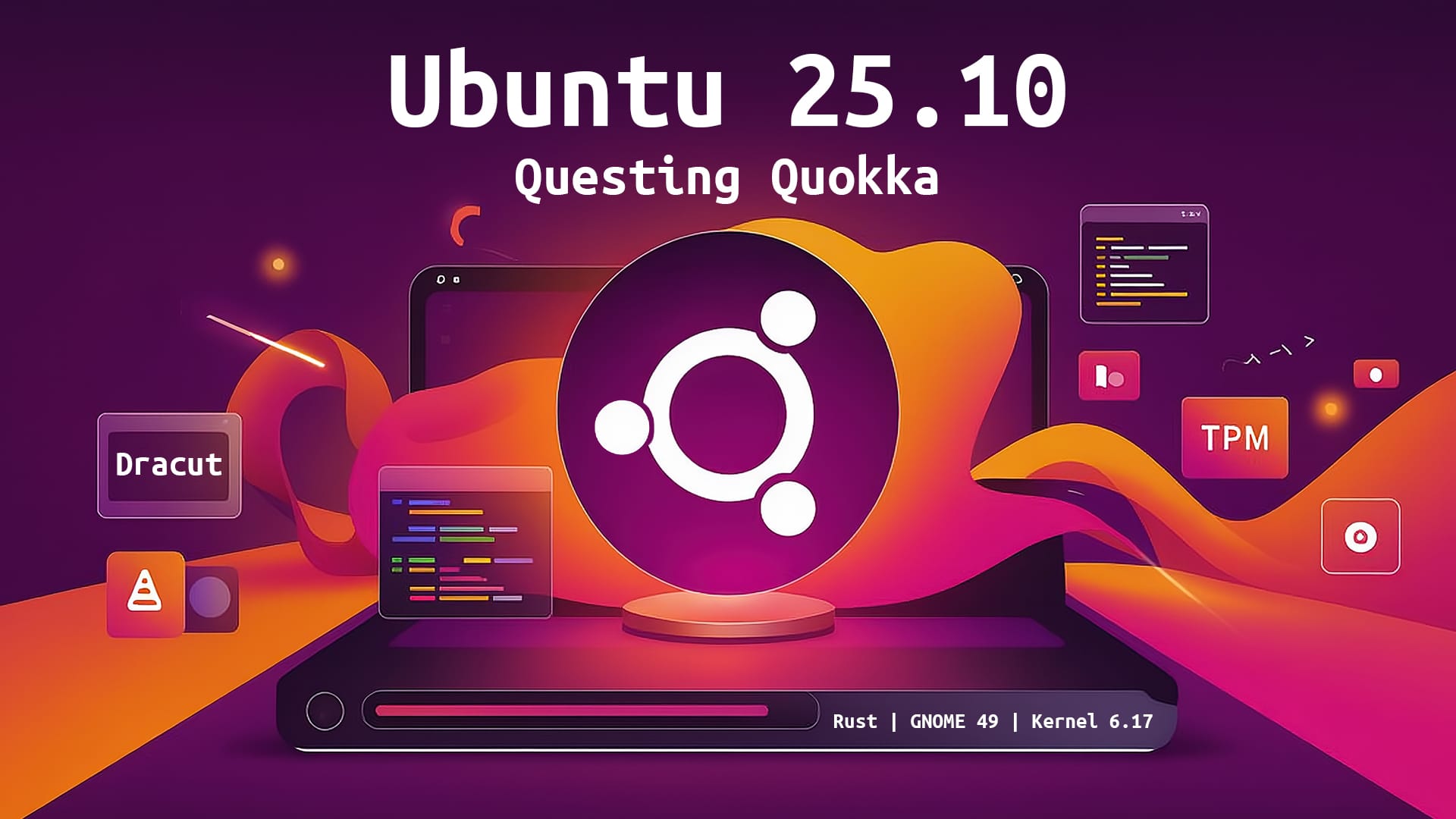
Ubuntu 25.10: A Look at the Evolution of the Distribution
The Linux community always eagerly awaits new releases. Ubuntu 25.10, known as "Oracular Oriole," arrives brimming with promise. This intermediate release lays the groundwork for the upcoming LTS. Therefore, it deserves a detailed analysis of its main features. Let's dive in.
The Main New Features Under the Hood
First and foremost, Ubuntu 25.10 incorporates a completely updated technical stack. First, we find the Linux 6.17 kernel. This kernel improves support for new hardware. Furthermore, the desktop environment is GNOME 49. This release introduces refinements to the user experience. For example, it includes HDR brightness controls. It also offers accessibility improvements on the lock screen.
Changes to Default Applications
Canonical has decided to make significant changes. Specifically, to the preinstalled applications. They've replaced the classic GNOME Terminal. PTXI Terminal is now available by default. The image viewer has also been replaced. The Magnifier app replaces Eye of GNOME. These changes aim to provide a more modern experience.
The Technological Transition: Rust and Dracut
One of the most talked-about transitions is that of Rust. The system now uses sudo-rs sudo as an experimental replacement. This change seeks to improve the security of the sudo command. In parallel, another important change affects the initialization system. Dracut replaces sudo initramfs-tools to generate the initramfs image. This promises a faster and more reliable startup.
Enhanced Security with TPM Support
Security is a constant priority in development. Ubuntu 25.10 integrates robust support for the TPM. The Trusted Platform Module enables automatic disk encryption. This feature makes it easier to protect sensitive data. It also speeds up the system recovery process. This is undoubtedly a crucial advance for business environments.
Step-by-Step Installation Guide
Now we'll proceed with the practical installation of the system. First, we'll download the ISO image from the official website. Next, we'll create an installation medium, such as a bootable USB drive. Then, we'll boot the system from that medium. The Ubuntu graphical installer is very intuitive. It will guide us through language selection and network configuration.
Setting Up Disk Partitions
Disk partitioning is a fundamental step. Personally, I recommend a specific scheme to optimize performance. For the root partition, I suggest using the BTRFS file system. This system allows you to use subvolumes for Timeshift backups. For the /home directory, the XFS system is an excellent choice. This scheme combines efficiency and ease of backup.
Personalization and Post-Installation Settings
Once the installation is complete, the real work begins. It's time to customize the system to our liking. We can start by updating all existing packages. To do this, open a terminal and run sudo apt update && sudo apt dist-upgrade -y. Next, it's a good idea to install additional essential software. Packages like htop, gufw for the firewall, and , timeshift are essential.
Empowering Software with Flatpak
The Ubuntu software ecosystem can be easily expanded. A great option is to enable Flatpak support. This gives us access to a vast collection of updated applications. First, we install the flatpak GNOME Software package and plugin. Then, we add the Flathub repository with a simple command. Finally, we can easily install applications like LibreWolf or Telegram.
Transforming the Desktop with Extensions
The GNOME desktop is tremendously flexible. Its true power is unleashed through the use of extensions. We can install the extension manager from the official store. Then, it's time to customize the interface. Extensions like "Dash to Panel" merge the dash and the top bar. "Arc Menu" provides a classic, functional application menu. These tools completely change the desktop experience.
Conclusion: A Solid and Forward-Looking Version
All in all, Ubuntu 25.10 is an extremely interesting release. Not only does it consolidate modern technologies like Rust and Dracut, but it also improves security with the integration of the TPM. Its updated foundation lays the groundwork for the future LTS. Further customization allows us to adapt it to any workflow. Therefore, it is a highly recommended option for users looking for the latest in the Ubuntu ecosystem.










0 comments:
Post a Comment